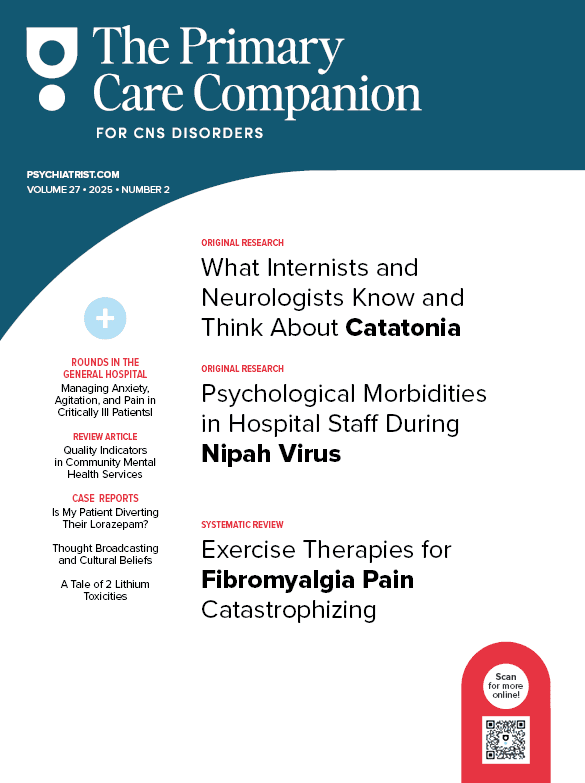
The United States has been battling the opioid epidemic for a few decades. According to the 2015 National Survey on Drug Use and Health,1 1.9 million US adults in the previous 12 months suffered from opioid use disorder. The management of opioid use disorder includes medications such as methadone, buprenorphine, and suboxone. As the novel coronavirus disease 2019 (COVID-19) pandemic is worsening, multiple medications are under trial. There is a paucity of literature regarding drug-drug interactions between therapies used for COVID-19 and opioid use disorder. The 9 novel COVID-19 medications reviewed included remdesivir, atazanavir, ritonavir/lopinavir, interferon β, favipiravir, ribavirin, tocilizumab, chloroquine, and hydroxychloroquine. We searched PubMed, Embase, Scopus, SciELO, PsycINFO, and Web of Science and looked at multiple guidelines including Medscape and Liverpool. Given the limited information available, we review the potential interactions of these medications with opioid use disorder treatment medications and summarize the current evidence.
Methadone
Methadone is a synthetic opioid that acts as an agonist at the μ-opioid receptor.2 It is metabolized by cytochrome P450 (CYP) 3A4 and 2B6.3Methadone is known to prolong the QTc interval, especially in higher doses.4 Caution should be used when combining 2 drugs that prolong the QTc interval. Hydroxychloroquine is used to treat malaria and chronic inflammatory conditions and is one of the controversial treatments under investigation for COVID-19. Hydroxychloroquine has a moderate capacity to prolong the QTc interval.5 A long QTc interval can potentially lead to life-threatening arrhythmias, torsades de pointes, and sudden cardiac death.6 When used with methadone, this risk proportionately increases.
Pharmacokinetic drug-drug interactions have been described between methadone and antiretroviral medications due to the metabolism related to CYP metabolism. There are conflicting reports regarding coadministration of methadone with ritonavir/lopinavir combination. Some research has observed no symptoms of opioid withdrawal despite a decrease in methadone’s area under the curve.3 In contrast, in 1 study3 opioid withdrawal symptoms were observed within 5 days in 27% of the patients, and 1 patient experienced torsades de pointes due to the supratherapeutic concentration of methadone. Thus, the interaction between methadone and protease inhibitors, including ritonavir/lopinavir, is not conclusive. We recommend caution when these medications are used together until further robust studies provide a definitive answer.
Buprenorphine
Buprenorphine is a semisynthetic opioid. It is a weak partial μ-receptor agonist and a weak κ-receptor antagonist.7 Buprenorphine is primarily metabolized by CYP3A4.3 A significant increase in plasma levels of buprenorphine has been observed when coadministered with antiretroviral treatment regimens involving ritonavir.3Such combinations may lead to buprenorphine toxicity. HIV treatment guidelines suggest close monitoring and caution when coadministering buprenorphine with a protease inhibitor.3
Suboxone
Suboxone is a combination of buprenorphine and naloxone.8 Naloxone is an opioid receptor antagonist and undergoes glucuronidation in the liver.9 Naloxone is not metabolized through the CYP enzymes and is neither an inhibitor nor an inducer of that enzyme. It has no known interactions related to the CYP system. However, due to the buprenorphine component, suboxone could have pharmacokinetics in drug interactions when coadministered with ritonavir and other protease inhibitors.
Conclusion
We have summarized the main interactions that can occur when using the novel COVID-19 drugs in combination with drugs used for treating opioid use disorders. Clinicians should be mindful of the interactions when treating patients with opioid use disorder who are also on novel COVID-19 medications.
Received: May 31, 2020.
Published online: July 2, 2020.
Potential conflicts of interest: None.
Funding/support: None.
REFERENCES
1.Han B, Compton WM, Blanco C, et al. Prescription opioid use, misuse, and use disorders in US adults: 2015 National Survey on Drug Use and Health. Ann Intern Med. 2017;167(5):293-301. PubMed CrossRef
2.Eap CB, Buclin T, Baumann P. Interindividual variability of the clinical pharmacokinetics of methadone: implications for the treatment of opioid dependence. Clin Pharmacokinet. 2002;41(14):1153-1193. PubMed CrossRef
3.Goodlet KJ, Zmarlicka MT, Peckham AM. Drug-drug interactions and clinical considerations with co-administration of antiretrovirals and psychotropic drugs. CNS Spectr. 2019;24(3):287-312. PubMed CrossRef
4.Methadone hydrochloride [package insert]. Columbus, OH: Boehringer Ingelheim Roxane, Inc; 2006.
5.O’ Laughlin JP, Mehta PH, Wong BC. Life threatening severe QTc prolongation in patient with systemic lupus erythematosus due to hydroxychloroquine. Case Rep Cardiol. 2016;2016:4626279. PubMed
6.Tisdale JE, Jaynes HA, Kingery JR, et al. Development and validation of a risk score to predict QT interval prolongation in hospitalized patients. Circ Cardiovasc Qual Outcomes. 2013;6(4):479-487. PubMed CrossRef
7.Lutfy K, Eitan S, Bryant CD, et al. Buprenorphine-induced antinociception is mediated by mu-opioid receptors and compromised by concomitant activation of opioid receptor-like receptors. J Neurosci. 2003;23(32):10331-10337. PubMed CrossRef
8.Suboxone (buprenorphine and naloxone) [package insert]. North Chesterfield, PA: Indivior Inc; 2018.
9.Chiang CN, Hawks RL. Pharmacokinetics of the combination tablet of buprenorphine and naloxone. Drug Alcohol Depend. 2003;70(2 suppl):S39-S47. PubMed CrossRef
aDepartment of Psychiatry, Texas Tech University Health Sciences Center at Odessa/Permian Basin, Odessa, Texas
bDepartment of Research, De Sousa Research Foundation, Mumbai, India
cSt David’s Healthcare, Austin, Texas
dInstitute of Psychiatry, Rawalpindi, Pakistan
eDepartment of Psychiatry, Penn State College of Medicine, Harrisburg, Pennsylvania
‡Drs Mansuri and Shah share equal credits as first/primary author.
*Corresponding author: Zeeshan Mansuri, MD, MPH, Texas Tech University Health Sciences Center at Odessa/Permian Basin, 2301 W Michigan Ave, Midland, TX 79701 (zeeshanmansuri@gmail.com).
Prim Care Companion CNS Disord 2020;22(4):20com02703
To cite: Mansuri Z, Shah B, Trivdei C, et al. Opioid use disorder treatment and potential interactions with novel COVID-19 medications: a clinical perspective. Prim Care Companion CNS Disord. 2020;22(4):20com02703.
To share: https://doi.org/10.4088/PCC.20com02703
© Copyright 2020 Physicians Postgraduate Press, Inc.
Please sign in or purchase this PDF for $40.00.



